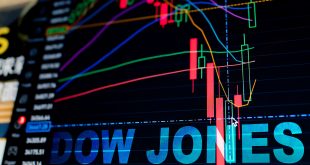The US Dollar Index (DXY), which tracks the value of the US dollar against a basket of major currencies, hovered around the 104.20 mark on Tuesday, April 1, 2025, reflecting a lack of clear direction following a batch of underwhelming US economic data. Investors digested a weaker-than-anticipated ISM Manufacturing PMI, a drop in job openings, and cautious remarks from Federal Reserve officials, all of which have clouded the outlook for the greenback. While the DXY managed modest gains, its technical foundation remains shaky, with traders bracing for key macroeconomic updates later in the week that could sway its trajectory.
Recent data underscored a cooling US economy, amplifying concerns over stagflation—a scenario where growth stagnates while inflation persists. The ISM Manufacturing PMI slipped to 49 in March from 50.3 the previous month, falling short of the expected 49.5 and signaling a contraction in manufacturing activity. Within the report, the Employment Index plummeted to 44.7, its lowest level since July of the previous year, highlighting an accelerating pace of job cuts. Meanwhile, the Prices Paid Index jumped to 69.4 from 62.4, hinting at mounting inflationary pressures tied to supply chain disruptions and potential tariff impacts. The chair of ISM’s Business Survey Committee noted that demand remains elusive for businesses, with many resorting to staff reductions and production scaling as they navigate an uncertain landscape.
Labor market indicators echoed this slowdown. The US JOLTS Job Openings report revealed a decline to 7.56 million openings in February, below market expectations and reinforcing signs of a softening job market. Hiring and separation rates held steady at 5.4 million and 5.3 million, respectively, suggesting little churn despite the drop in vacancies. Richmond Fed President Thomas Barkin described the current economic data as “wrapped in a thick fog,” capturing the difficulty in interpreting these mixed signals. Still, the Federal Reserve’s latest Summary of Economic Projections anticipates a stable unemployment rate near 4.4% through 2025, offering a sliver of optimism amid the gloom.
Market reactions have been muted, with currency traders appearing less rattled by tariff rhetoric and more focused on evidence of economic stagnation. Attention is now turning to Friday’s Nonfarm Payrolls (NFP) report, a critical gauge of labor market health that could either bolster or further erode confidence in the dollar. According to CME data, the likelihood of a May rate cut remains low, though persistent weak data could fuel dovish expectations. For now, the DXY drifts within a tight range between 104.00 and 105.00, with risk sentiment fragile as equities and bonds face potential downside pressure.
From a technical perspective, the DXY’s outlook is equally uncertain. While Tuesday saw slight gains, the broader trend leans bearish. The Moving Average Convergence Divergence (MACD) hints at a possible bullish crossover, but this is overshadowed by sell signals from longer-term indicators, including the 100-day and 200-day Simple Moving Averages (SMA) and the 30-day Exponential Moving Average (EMA). Resistance looms near 104.84, with support clustered around 104.13. As the market awaits further catalysts, the US dollar remains at a crossroads, caught between fleeting gains and persistent economic headwinds.

 Noor Trends News, Technical Analysis, Educational Tools and Recommendations
Noor Trends News, Technical Analysis, Educational Tools and Recommendations




